
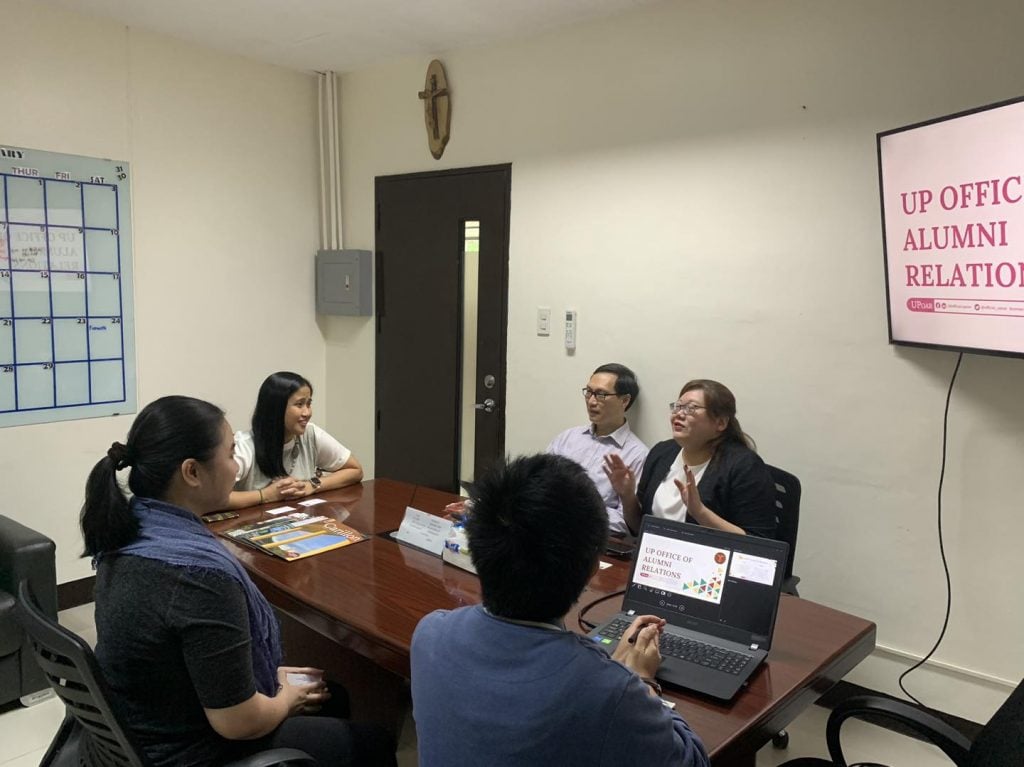
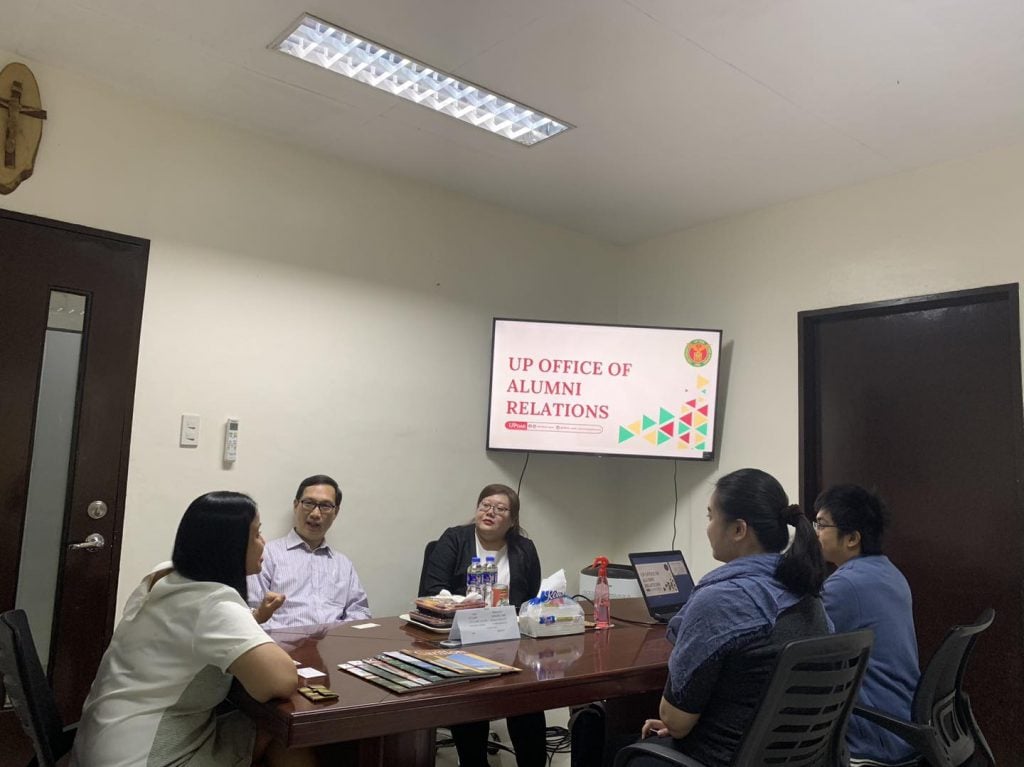
Last March 8, the UP Office of Alumni Relations, led by Director KC M. Abalos-Orendain, had a benchmarking activity with Nanyang Technological University Office of Alumni Engagement, represented by Director Th’ng Beng Hooi and Manager Kate Ang.
News & Announcements
UP CSWCD releases 2nd Batch for Fe Parajas Israel Benito Scholarship Fund

The UP Diliman College of Social Work and Community Development (CSWCD) released the list of the 2nd Batch of students granted with the Fe Parajas Israel Benito Scholarship Fund. Commenced on the second semester of AY 2023-2024, a total of ten students applied for the scholarship program and five students qualified after carefully assessing their academic standing, income decile, and brief narrative detailing their reasons for applying. The first batch of scholars was launched last October 2023.
Two out of the five grantees were renewed from their previous scholarship grant. The 1st batch of scholars shared how the Fe Benito Scholarship became their lifeline, easing their financial burden which often hampers students’ ability to pursue education. One of the scholars recalled how the scholarship helped him not just financially but also to maintain a healthy lifestyle while being away from the comfort of his home by allocating some of his stipend to buy fruits and vegetables within the community. In addition, CSWCD happily reported that one of the scholars graduated from the college last semester.
In honor of his mother’s legacy, Director/Producer Ted Benito established the Fe Parajas Israel Benito Scholarship Fund to provide financial aid for students who are taking Bachelor of Science in Community Development (BSCD) and Bachelor of Science in Social Work (BSSW) in UP Diliman.
The scholarship program is a joint effort of Ted Benito, UP Diliman CSWCD, UP Alumni Association of Greater Los Angeles (UPAAGLA), the Office of Scholarships and Grants (OSG), which is under the Office of the Vice Chancellor for Student Affairs (OVCSA), and the Office of the Vice President for Public Affairs, UP Office of Alumni Relations (UP OAR).
The Fe Parajas scholarship program will be providing assistance to CSWCD students until AY 2027-2028.
Written by: Marie Ylenette W. Reforzado, Office of Alumni Relations
Support Needed: Philippine Madrigal Singers visit in Alberta, April 14 – 24, 2024

With their Canada Tour 2024, we have the privilege of hosting the world-renowned Philippine Madrigal Singers in Edmonton.
This presents a unique opportunity for us to showcase our hospitality.
We need support and volunteers to assist on concert day, accompany them during their time in Alberta, and help raise funds to offset the expenses associated with hosting – including transportation, accommodation, and meals. Any help / contribution / support, big or small, will do!
Please see more details here on how you can help and to get an idea of our activities.
You are invited to the UPAAE Potluck Dinner with the MADZ on April 18 (Thursday) at 6:00 PM! RSVP here: bit.ly/UPAAEMADZdinner
There will also be a zoom call on Sunday March 24 at 7pm, for those who would like to hear more, and volunteer. Let us know by responding to this email if you would like to join us.
If you have questions, or you’re wondering about a specific support that you might be able to provide, please simply respond to this email, or contact Kehrl at 780-257-0390.
Visit their Facebook page for more info
University of the Philippines Alumni Association Edmonton (UPAAE)
2019 UPAA Distinguished Service Awardee for an Alumni Chapter
UPD Study Investigates Contaminants of Emerging Concern in Mega Manila Rivers
By: Maria Alexandra Marmol
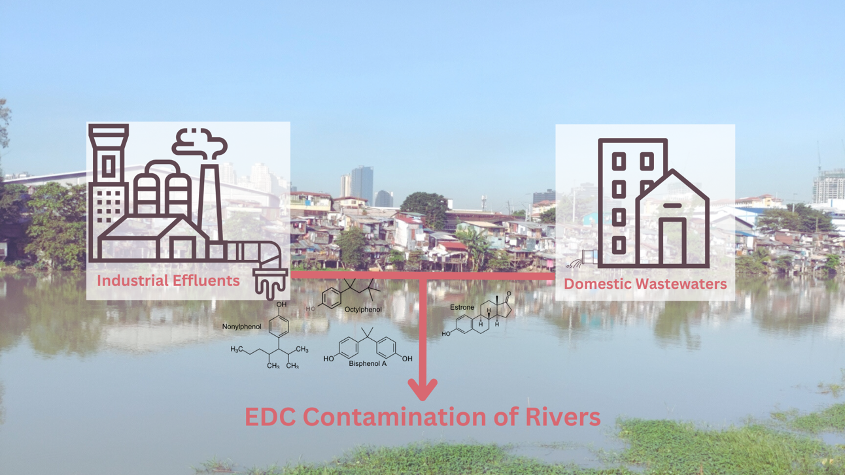
Under the Department of Science and Technology (DOST) project, “Post-Wastewater Treatment Determination of Endocrine Disrupting Compounds for Interventions,” researchers of the UP Diliman College of Science Institute of Chemistry (UPD-CS IC) studied the rivers of Mega Manila and demonstrated the presence of EDCs, or endocrine-disrupting compounds.
EDCs are mixes of chemicals that can mimic hormones and thus adversely affect hormone regulation in the human body. Long-term exposure to these compounds can lead to a number of endocrine-related health issues, such as respiratory and neurodevelopmental problems, infertility, diabetes, obesity, and even prostate or breast cancer. Because of this, EDCs are considered water contaminants of emerging concern (CEC).
The study of Dr. Maria Pythias Espino and research assistants Kate Galera, and Katrina Sta. Ana is the first to report on the occurrence and concentrations of EDCs in the Marikina, Pasig, Angat, and Pampanga rivers. This provided useful baseline data for DOST’s ongoing research program on “Removal of Excess Nitrogen and Endocrine Disruptors from Wastewater” (RENEW).
“In the Philippines, it is important to know the presence and concentrations of EDCs in aquatic systems because many Filipinos depend on aquaculture and fishing for livelihood and subsistence,” said the researchers in their paper.
E1, or estrone, is a hormone that can induce endocrine-disrupting effects even at low concentrations of long-term exposure, such as fertility issues in aquatic organisms. It had been the only hormone detected to date in this study of the rivers, and its presence was attributed to municipal wastewater since this type of hormone can come from human and animal waste.
Industrial chemicals bisphenol A, nonylphenol, and octylphenol were also detected in the rivers. The researchers surmised that this was due to their extensive use in manufacturing various products such as detergents, textiles, plastics, and many more, but clarified that the concentrations are still below international guideline values.
The US, Canada, and the EU have guidelines for some EDCs in their environmental waters. The Philippines, however, does not have guideline values yet for the regulation of these compounds, nor the wastewater treatment facilities that would ensure the mitigation of CECs. The research team hopes these findings will hasten the formulation of national guidelines for the monitoring and control of these contaminants.
“Even in nanogram per liter to microgram per liter concentrations, these contaminants of emerging concern may have harmful effects on aquatic organisms and humans. The findings are critical evidence of contamination because there are no regulatory guidelines yet on these contaminants in the waterways and water systems,” the researchers explained, pointing out how the risks of EDCs lie particularly in their bioaccumulation and persistence.
“More cleanup efforts, effective regulations in wastewater treatment, and sustainable water resource management policies are needed to improve the water quality of the rivers in Mega Manila,” they advised. The Marikina and Pasig rivers, along with the Angat and Pampanga rivers, all drain into Manila Bay, affecting one of the country’s major socioeconomically important bodies of water.
Water samples from the four rivers were processed by solid-phase extraction and analyzed by liquid chromatography with tandem mass spectrometry, a method of separating and identifying compounds in ultra-trace concentrations.
References:
Endocrine disruptors. (n.d.). National Institute of Environmental Health Sciences. https://www.niehs.nih.gov/health/topics/agents/endocrine
Sta. Ana, K. M., Galera, K. C., & Espino, M. P. (2023) Contamination of bisphenol A, nonylphenol, octylphenol, and estrone in major rivers of Mega Manila, Philippines. Environmental Toxicology and Chemistry. https://doi.org/10.1002/etc.5778
UP Mindanao launches first Feb Fair Night



ICYMI | The University of the Philippines Mindanao launches the first ever Feb Fair Night on February 29, 2024, at the UPMin Kalimudan covered court. This is in celebration of the university’s 29th founding anniversary.
Students, faculty, and staff joined the celebration and were entertained by the booths and performances of the various organizations.
This event is spearheaded by the UPLBAA-Davao Chapter in partnership with the UP Mindanao administration and the University Student Council.
Source: University of the Philippines Mindanao Facebook
UP Mindanao Office of Student Affairs launches the Bahay Kubo Project


ICYMI | The University of the Philippines Mindanao Office of Student Affairs, launches the Bahay Kubo Project beside EBL Dormitory on February 29, 2024.
The Bahay Kubo project aims to help the UPMin student dormers as a sustainable food source for students on campus where dormers can propagate vegetables, store food, and cook meals.
The Bahay Kubo Project is in partnership with Department of Agriculture, UPMin Ugnayan ng Pahinungod, Office of Extension and Community Service and the ever supportive alumni–UP Alumni Association-New York.
UP Ugnayan ng Pahinungod – Cebu team attended the launching as guests and express their support for the initiative.
Source: University of the Philippines Mindanao Facebook
UP Baguio Alumni Relations Office conducts lecture-discussion to celebrate International Women’s Day
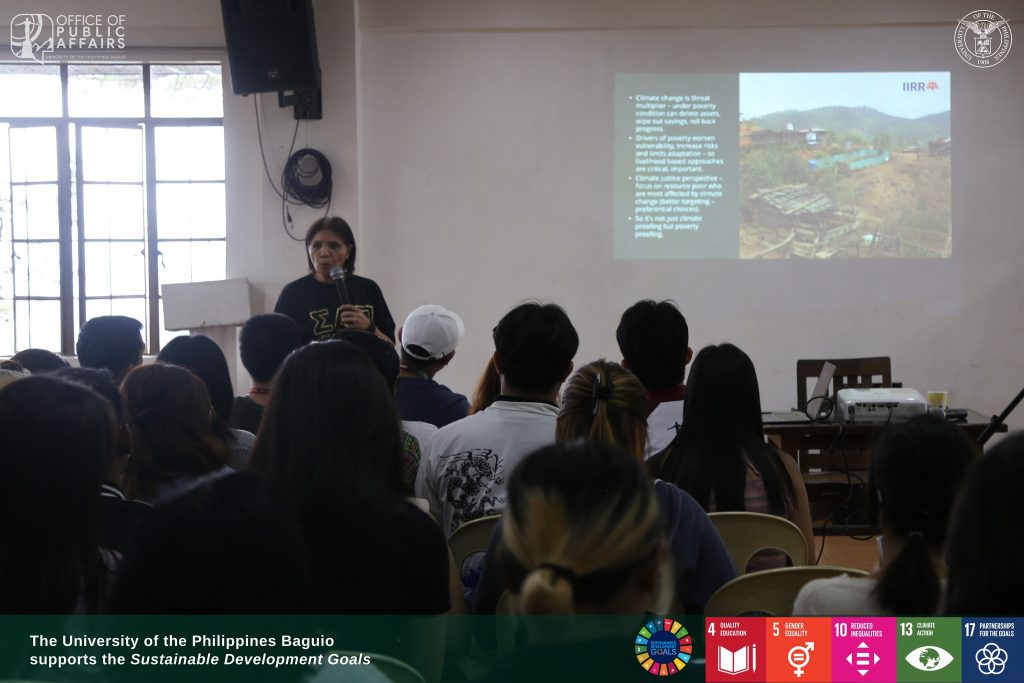
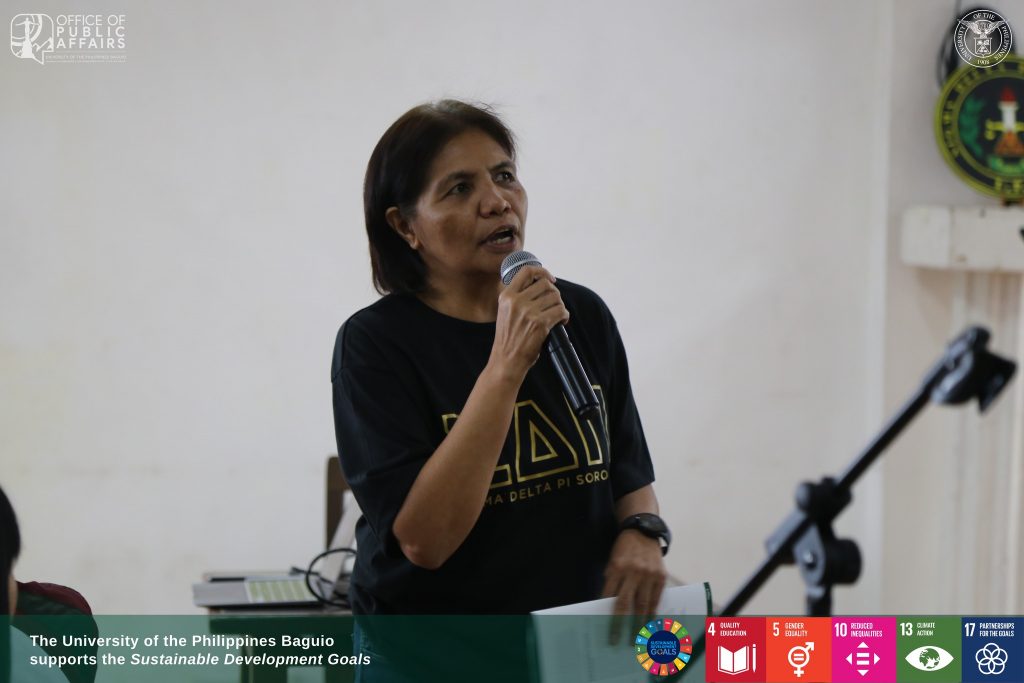
More pictures on UP Baguio Facebook
To celebrate International Women’s Day, the University of the Philippines Baguio through its Alumni Relations Office (ARO)- UP Baguio, KASARIAN Gender Studies Program and Sigma Delta Pi Sorority Alumnae Association-UP Baguio Chapter conducted a lecture-discussion entitled “Women and Climate Change: Vulnerability, Impact and Action” at the Sarmiento Hall, Alumni Center – UP Baguio, March 8, 3:00 PM.
The speaker for the event is Magnolia Rosimo, an alumna of UP Baguio and the Operations Director of the International Institute of Rural Reconstruction (IIRR).
The lecture discussion tackled talks on women’s place, space and location on climate change.
Source: University of the Philippines Baguio Facebook
UP Manila CPH signs MOA with BSH ‘68 Alumni

MOA Signing with BSH ‘68 Alumni
A follow-up meeting and holiday fellowship celebration between the UP College of Public Health (UP CPH) officials and members of the University of the Philippines Alumni Association in America (UPAAA) was held on 20 December 2023 in Taguig City. In the meeting, the current CPH Officials were able to meet with the members of the BS Hygiene Class of 1968 and the University of the Philippines Alumni Association in America (UPAAA).
The gathering kicked off with lively introductions from both the CPH officials and the alumni. On the meeting agenda were updates on alumni matters, including discussions on the proposed alumni forum series featuring CPH alumni, and potential collaborations between the Alumni Association and the College of Public Health. Dr. Luceli Cuasay then surprised the party by announcing her sponsorship of an additional scholarship, complementing the existing scholarships offered by UPAAA. The occasion also witnessed the continuation of these scholarships through a Memorandum of Agreement signing.
UP CPH Dean and Centre Director Dr. Fernando B. Garcia, Jr., Former Dean and Centre Director, Dr. Vicente Y. Belizario; Assistant to the Dean for Planning and Development, Dr. TJ Robinson Moncatar; Associate Dean for Research, Dr. Sharon Yvette Angelina Villanueva; College Secretary, Dr. Evalyn Roxas; Student Relations Officer, Dr. Maria Margarita Lota; and Alumni Relations Officer, Prof. Rose Abigail Duarte met with Ms. Niña Lojo and Ms. Rosalita Tan of the UPAAA, and Mr. John Paul delos Trinos during the get-together. Mr. Adriel Andonaque provided support to the event as the AR technical assistant.
Moving forward, the UP College of Public Health hopes to involve its alumni in more meaningful endeavors and initiatives, fostering strong relations between the institution and its graduates.
Source: UP Manila College of Public Health Facebook
UPAA-Davao organizes “Quiz UP” for UP Mindanao’s 29th Anniversary
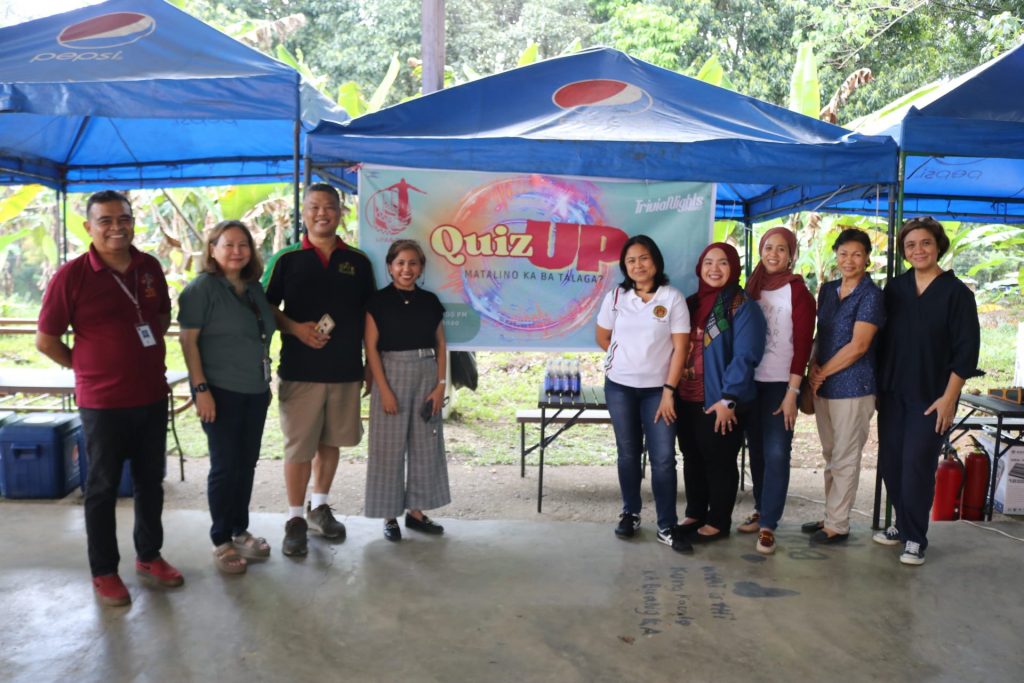
The UPAA-Davao organizers with UPMin officials and participants in “Quiz UP,” an offering for UP Mindanao’s 29th anniversary held on February 29, 2024 in UP Mindanao’s Kalimudan Student Center.
See more photos on their Facebook page
Source: UP Alumni Association – Davao Facebook
UP alumni launches UPAA Western Australia

On November 11, 2023, we successfully launched UP Alumni Association – Western Australia with the aim of introducing the association to the broader community of UP alumni and Filipinos in WA. We presented our association’s objectives and proposed short-term and long-term activities. It was a memorable afternoon filled with good fun, reminiscing about our days in UP.
A total of 97 membership applications were received, coming from alumni of all UP campuses and graduates from Batch 1957 to 2018.
To those who missed the launch, we hope to see you on our next event. We can’t wait to share with you our plans for 2024.
Here are some photos from the launch.
Credits go to all members who shared their photos. Feel free to tag yourself and your friends.
Source: UP Alumni Association – Western Australia Facebook
